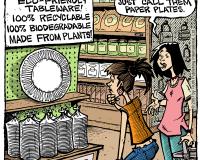
Vibrant Environment
Climate Change And Sustainability
All | Biodiversity | Climate Change and Sustainability | Environmental Justice | Governance and Rule of Law | Land Use and Natural Resources | Oceans and Coasts | Pollution Control

Businesses historically have had a complicated relationship with the natural environment. The Industrial Revolution, marked by the boom of economic development and birth of modern business, emerged at the expense of natural resources and public health. Historical and current business activities continue to contribute to some of our most pressing global challenges, including climate change, resource scarcity, and social inequality. Concepts such as corporate social responsibility and environmental social governance attempt to establish a new relationship between business, the environment, and communities. These principles aspire to synergize business prosperity, sustainability, and social equity.

Uneasy tensions rest at the crossroads between democratic theory and contemporary climate change mitigation policy. The connection between human activity and the pending climate consequences caused by lack of emissions mitigation is clear. For decades, we’ve known that climate change is both anthropogenic and will cause considerable harm to the global public good, including increased intensity of natural disasters, food insecurity, drought, and sea-level rise.

As pristine landscapes become a relic of the past, the icy tundras and taigas of the Arctic polar regions are becoming prized destinations for high-end adventure travelers who want to see the region before it’s gone forever. The perverse consequence of this kind of “last-chance” tourism in the Arctic is that, done carelessly, it will almost certainly accelerate the destruction and damage of the precise attractions that it so fetishizes, people and landscapes included.

Most people probably haven’t heard of Anote Tong, the former president of Kiribati, but he is somewhat of a celebrity in the international climate sphere. His ideas were radical and often subject to criticism, even within his own nation. Yet, radical action may be the very thing that Kiribati, and so many other island nations, require.
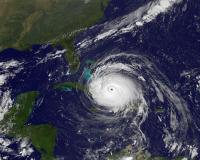
Early in my career, I was conducting bird research for a very inspiring, but demanding professor. With each bird identification that I brought to him, he would respond with a series of qualifying questions, challenging me to provide sufficient proof that my observations would meet his standards for making a positive identification of whatever species I claimed to have seen. Somewhat over-confident and always eager to report my sightings, his response usually left me unsatisfied, and often frustrated. “Trust but verify,” this professor would always say.
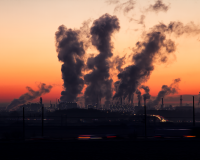
In March of last year, President Trump issued fossil-fuel friendly Executive Order No. 13783, Promoting Energy Independence and Economic Growth. Section 5 of this Order directed agencies to discontinue use of the “social cost of carbon” (SCC), a protocol developed under the Obama Administration to monetize the impacts of climate-related disasters and disruption.

If you walk into a grocery store almost anywhere in the United States, the first thing you see when you come in is produce. The produce section is a vast treasure trove of fruits, vegetables, and fresh herbs. When shopping for these—something most of us do each week—one immediate decision is whether or not to pay a little extra for “organic” products. We have to make a similar choice in the dairy aisle. And in other areas of the store, we have to decide if it’s worth it to pay extra for “all natural,” “GMO-free,” or “ethically/sustainably produced” goods.
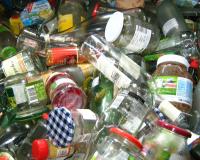
Recycling is perhaps the most prevalent pro-environmental activity at the household level. Household recycling efforts may be influenced by supportive nudges and, in some cases, laws that mandate recycling behavior. But unlike efforts such as decreasing household energy usage, success in recycling also hinges on governmental support: there must be some mechanism for collecting the recycled materials and converting them into useable commodities. Government entities, and in some cases private waste collection firms, provide for these recycling amenities.

On April 11, Environmental Defense Fund (EDF) President Fred Krupp announced the organization’s plans to create and launch a new satellite to monitor and measure global methane emissions—from space. The "groundbreaking" MethaneSAT plans were unveiled in a TED talk in Vancouver, B.C. The satellite will measure only emissions of methane, the powerful greenhouse gas responsible for roughly one quarter of the man-made global warming we currently experience.
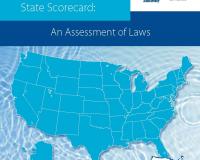
Most states have significant room to improve their legal frameworks regarding water conservation and efficiency, and long-term resiliency, according to a report released last month by ELI and the Alliance for Water Efficiency (AWE). In the 2017 Water Efficiency and Conservation State Scorecard, a five-year update to the 2012 scorecard, each state received two separate grades: one for water use efficiency and conservation, and one for climate resiliency planning. The national average for both is a “C,” but with some great grades in each area and more than half of the states earning higher water use efficiency and conservation scores than they did in 2012.